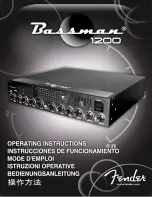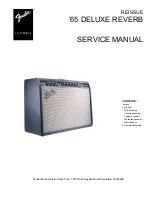
3-25
SR830 Basics
Lock-in amplifiers can be used to measure noise.
Noise measurements are generally used to char-
acterize components and detectors.
The SR830 measures input signal noise AT the
reference frequency. Many noise sources have a
frequency dependence which the lock-in can
measure.
How does a lock-in measure noise?
Remember that the lock-in detects signals close to
the reference frequency. How close? Input signals
within the detection bandwidth set by the low pass
filter time constant and roll-off appear at the output
at a frequency f=f
sig
-f
ref
. Input noise near f
ref
appears as noise at the output with a bandwidth of
DC to the detection bandwidth.
For Gaussian noise, the equivalent noise band-
width (ENBW) of a low pass filter is the bandwidth
of the perfect rectangular filter which passes the
same amount of noise as the real filter.
The ENBW is determined by the time constant and
slope as shown below. Wait time is the time
required to reach 99% of its final value.
T= Time Constant
Slope
ENBW
Wait Time
6 dB/oct
1/(4T)
5T
12 dB/oct
1/(8T)
7T
18 dB/oct
3/(32T)
9T
24 dB/oct
5/(64T)
10T
Noise estimation
The noise is simply the standard deviation (root of
the mean of the squared deviations)of the meas-
ured X, Y or R .
The above technique, while mathematically sound,
can not provide a real time output or an analog
output proportional to the measured noise. For
these measurements, the SR830 estimates the X
or Y noise directly.
To display the noise of X, for example, simply set
the CH1 display to X noise. The quantity X noise is
computed from the measured values of X using
the following algorithm. The moving average of X
NOISE MEASUREMENTS
is computed. This is the mean value of X over
some past history. The present mean value of X is
subtracted from the present value of X to find the
deviation of X from the mean. Finally, the moving
average of the absolute value of the deviations is
calculated. This calculation is called the mean
average deviation or MAD. This is not the same as
an RMS calculation. However, if the noise is
Gaussian in nature, then the RMS noise and the
MAD noise are related by a constant factor.
The SR830 uses the MAD method to estimate the
RMS noise of X and Y. The advantage of this tech-
nique is its numerical simplicity and speed.
The noise calculations for X and Y occur at
512 Hz. At each sample, the mean and moving
average of the absolute value of the deviations is
calculated. The averaging time (for the mean and
average deviation) depends upon the time con-
stant. The averaging time is selected by the
SR830 and ranges from 10 to 80 times the time
constant. Shorter averaging times yield a very
poor estimate of the noise (the mean varies rapidly
and the deviations are not averaged well). Longer
averaging times, while yielding better results, take
a long time to settle to a steady answer.
To change the settling time, change the time con-
stant. Remember, shorter settling times use small-
er time constants (higher noise bandwidths) and
yield noisier noise estimates.
X and Y noise are displayed in units of
Volts/
√
Hz. The ENBW of the time constant is
already factored into the calculation. Thus, the
mean displayed value of the noise should not
depend upon the time constant.
The SR830 performs the noise calculations all of
the time, whether or not X or Y noise are being
displayed. Thus, as soon as X noise is displayed,
the value shown is up to date and no settling time
is required. If the sensitivity is changed, then the
noise estimate will need to settle to the correct
value.
Summary of Contents for SR830
Page 5: ...1 4...
Page 11: ...SR830 DSP Lock In Amplifier 1 10...
Page 13: ...2 2 Getting Started...
Page 17: ...2 6 The Basic Lock in...
Page 23: ...2 12 Outputs Offsets and Expands...
Page 25: ...2 14 Storing and Recalling Setups...
Page 31: ...3 4 SR830 Basics...
Page 33: ...3 6 SR830 Basics...
Page 37: ...3 10 SR830 Basics...
Page 53: ...3 26 SR830 Basics...
Page 74: ......
Page 83: ...4 30 Rear Panel...
Page 107: ...5 24 Remote Programming...
Page 113: ...5 30 Remote Programming...
Page 117: ...5 34 Remote Programming...
Page 121: ...6 4 Performance Tests...
Page 123: ...6 6 Performance Tests...
Page 125: ...6 8 Performance Tests...
Page 129: ...6 12 Performance Tests...
Page 131: ...6 14 Performance Tests...
Page 133: ...6 16 Performance Tests...
Page 139: ...6 22 Performance Tests...
Page 145: ...7 2 Circuit Description...
















































